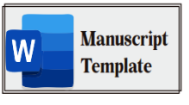PENGARUH PEOPLE, PROCESS, DAN PHYSICAL EVIDENCE TERHADAP KEPUASAN ATAS PELAYANAN PADA PERBANKAN SYARIAH DI KOTA PADANG
Abstract
Keywords
Full Text:
PDF (Bahasa Indonesia)References
Andespa, R. (2016). Strategi Industri Perbankan di Sumatera Barat: Pemilihan Segmentasi Pasar Untuk Menciptakan Pelayanan yang Memuaskan. Maqdis: Jurnal Kajian Ekonomi Islam, 1(1): 47-62.
Aritonang, L. R., & Lerbin, R. (2005). Kepuasan Pelanggan: Pengukuran dan Penganalisisan dengan SPSS. Jakarta: Gramedia Pustaka Utama.
Gasperz, V. (2012). All in One Management Toolbook. Bogor: Tri-Al Bros Publishing.
Haryoso & Suhartono. (2009). Pengaruh Kualitas Pelayanan dan Bauran Pemasaran terhadap Loyalitas Anggota dengan Kepuasan Anggota sebagai Variabel Intervening. Wacana, 12(2): 1-20.
Johannes, J., Raf, M., & Lukman, M. (2012). Analisis Kepuasan Nasabah Prioritas Berdasarkan Bauran Pemasaran (Kasus Pada PT. Bank Central Asia, Tbk Kantor Cabang Utama Jambi). Jurnal Manajemen Pemasaran Modern, 10(3): 35-45.
Kotler, P & Kevin L. K. (2012). Marketing Management. London: Pretince Hall.
Lovelock, C., & Lauren, K. W. (2007). Manajemen Pemasaran Jasa. Jakarta: Indeks.
Mucai, G. P., Mbaeh, E. K., & Noor, A. I. (2013). Extended Marketing Mix and Customer's Satisfaction in Classified Non-Star Hotels in Meru Municipality Kenya. International Review of Management and Business Research, 2(3): 691-696.
Ndubisi, N. O., & Chan, K. W. (2005). Factorial and Discriminant Analyses of the Underpinnings of Relationship Marketing and Customer Satisfaction. The International Journal of Bank Marketing, 23(7): 542-557.
Rakhsa, R & Majidazar, M. (2011). Evaluation of Effectiveness Marketing Mix on Consumer Satisfaction and Loyalty: (Case Study: The East Azarbaijan Pegah Diary Company in Tabriz, Iran). Middle-East Journal of Scientific Research, 10(5): 755-763.
Sarker, M. A. H., Aimin, W., & Begum, S. (2012). Investigating the Impact of Marketing Mix Elements on Tourists ‘Satisfaction: An Empirical Study on East Lake. European Journal of Business and Management, 4(7): 273-282.
Thamrin, H. M. (2012). The Role of Service Marketing Mix and Ship Service Quality towards Perceived Value and its Impact to Ship Passanger’s Satisfaction in Indonesia. Global Journal of Management and Business Research. 12(3): 97-101.
Tjiptono, F. (2008). Strategi Pemasaran. Yogyakarta: Andi.
Zeithaml, A, Parasuraman. (2007). Reasessment of Expectations as Comparison Standard in Measuring Service Quality: Implication for Future Research. Journal of Marketing. 5(22): 251-260.
DOI: http://dx.doi.org/10.15548/al-masraf.v3i2.201
Refbacks
- There are currently no refbacks.

This work is licensed under a Creative Commons Attribution-NonCommercial-ShareAlike 4.0 International License.
View My Stats

